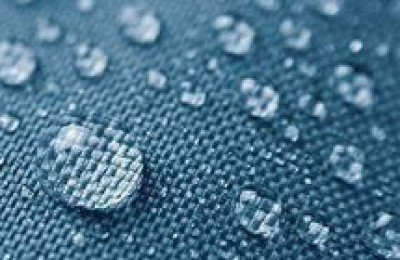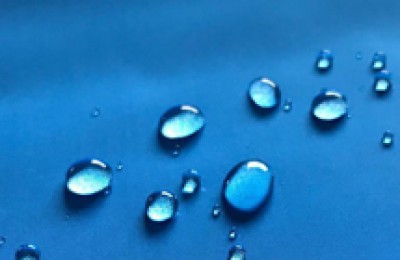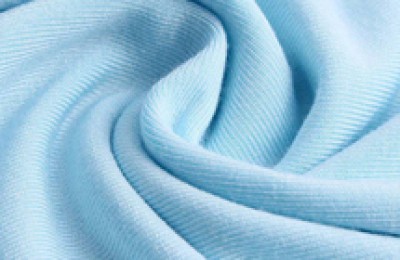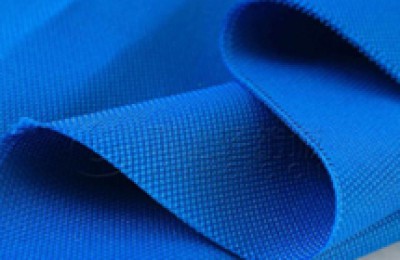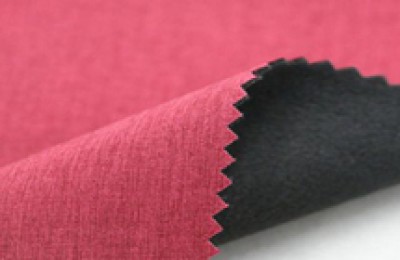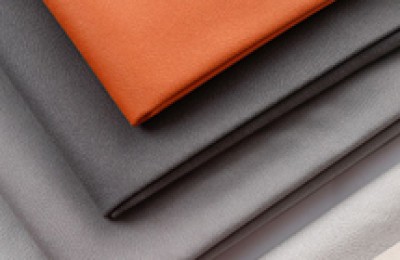During the dyeing and finishing process, textiles are subjected to moist heat treatment with various chemical agents and mechanical tension. Not only the organizational structure is deformed, but also the hand feel is stiff and rough. Softening finishing is to make up for this defect and make the fabric feel soft. processing process.
Reasons for soft finishing of fabrics
1. Natural fibers
Cotton fiber has natural softness because it contains oil and wax, wool, Natural fibers such as silk also have a unique soft feel. However, after bleaching, dyeing, printing or functional finishing, due to the removal of wax oil and damage to the fibers, the fabric becomes rougher, the luster becomes darker, and even the sewing performance is affected. Therefore, soft finishing is required.
2. Synthetic fibers
Synthetic fibers have a better feel than cotton and Natural fibers such as wool, silk, and hemp are inferior to synthetic fiber fabrics. After being highly stabilized, the hand feel of synthetic fiber fabrics becomes very rough and hard. Only through soft finishing can it be given a soft touch of natural fibers to ultimately improve its wearing performance. .
The mechanism of soft finishing
1. Reduce the surface tension of the fiber
Textile fiber is a substance composed of linear polymers with a large specific surface. The shape is very slender and the molecular chain has good flexibility. When surfactant (or softener) is added to the finishing liquid, since the surfactant is prone to directional adsorption on the interface (textile fiber and finishing liquid), the interfacial tension of the fiber is reduced, and the work required to expand the surface area is reduced. Allowing the fiber to easily expand its surface and extend its length. The result is a voluminous, voluminous fabric that creates a soft hand.
2. Reduce the friction coefficient of the fiber
The surfactant adsorbs a thin layer on the surface of the fiber and is hydrophobic. Arranged neatly outward. In this way, friction occurs between hydrophobic groups that slide against each other. The longer the hydrophobic group, the easier it is to slide.
Reduces the friction coefficient of the fiber. Reduce the friction resistance between fibers or between fibers and the human body to obtain a soft feel.
Properly reducing the friction coefficient can also make the yarns slide easily when the fabric is subjected to external force, thereby dispersing the stress and improving the tearing strength, or when the fabric is subjected to tension during processing. The fibers easily return to their relaxed state and the fabric becomes fluffy.
Common quality problems in softness
1. Alkaline problem
When cotton fabrics are pre-treated, a higher concentration of alkali is usually used to remove fabric impurities (especially the amount of alkali used in mercerization is larger). The alkali cannot enter the fiber. It is easy to clean, and alkali must be added when dyeing (reactive vat dye), so the cloth surface may be alkaline during finishing. Chemical fiber fabrics must be restored and cleaned after dyeing. Currently, printing and dyeing factories still use insurance powder and caustic soda for cleaning. If the subsequent cleaning is not clean, it will also cause the soft front fabric to be stained with alkali. Ordinary silicone oil is not resistant to alkali and will break emulsions under alkaline conditions. Therefore, the cloth surface must be washed with an alkali agent before softening to keep the pH in a neutral range.
2. Cohesion problem
On fabrics containing short fibers (cotton cloth, T/R cloth, velvet type), some short fibers will inevitably fall off during the processing process. The short fibers falling off the cloth will cohesion with ordinary silicone oil and bond with the demulsified silicone oil. , forming sticky rollers or silicon spots. When the water quality is relatively poor, it will also condense with ordinary silicone oil to produce sticky rollers. In addition, similar situations will also occur with velvet fabrics.
3. The problem of staining the cylinder
When making soft, usually Silicone oil will stick to the cylinder wall. Over time, some black oil spots will form on the cylinder wall, and silicone oil spots will form on the cloth surface.
4. Handle problem
Due to the poor feel of fabrics in the market The requirements are getting higher and higher, and various fabrics need to show various style requirements due to different seasons and different customer requirements. Some require smooth drape, smooth and flexible, fluffy and soft, pure elasticity, etc. wait. A kind of silicone oil can generally only reflect one style.
5. Yellowing problem
Heat yellowing: during operation Long periods of downtime can cause fabrics to remain yellow, and the amino hydrogen of aminosilicone oil is easily oxidized by air to form chromophores, resulting in yellowing. The product turns brown and the brown color makes the white fabric look like it has lost its essential whiteness or has simply turned yellow. The pH is too high and the temperature during drying is too high, causing the cotton fabric to turn yellow.
6. Cost issue
The most confusing issue for printing and dyeing factories at present is the cost issue. Since the prices of water, electricity and gas are at The prices continue to rise, but the printing and dyeing processing fees are not high. As a result, many printing and dyeing factories have been busy for a year but have basically no profits. Therefore, cost control is a problem that printing and dyeing factories need to solve. The cost of finishing auxiliaries is a big part of the printing and dyeing factory, so reducing the cost of finishing auxiliaries is an urgent problem that printing and dyeing factories need to solve.
Causes and treatment methods of silicone oil spots
1. Appearance on the fabric surface after setting How to deal with silicon plaque?
For silicon spots on polyester fabrics, you can use degreasers and soda ash to remove them (use degreasers and treat them under alkaline conditions of 80-90 degrees), or you can Remove with silicone remover and soda ash.
For pure cotton and polyester-cotton fabrics, generally after the silicon spots on the fabric are removed, the color of the fabric becomes lighter, and the fabric needs to be counter-dyed.
2. When amino silicone oil emulsion is used together with color fixing agent, soft oil, etc., silicone spots may sometimes occur, but not when used alone. Why?
Amino silicone oil is incompatible with color fixing agents, soft oils and other additives, causing the silicone oil to float. Amino silicone oil emulsion is a cationic surfactant (or weak cation), and many chemicals used in the dyeing process are anionic surfactants, such as: dyes (some dyes are anionic), leveling agents, spreading agents, color fixing agents Once these chemicals are not washed thoroughly after dyeing and finishing and before softening, when the cationic amino silicone oil series softener reacts with the anionic substances in the dye bath, the amino silicone oil cationic emulsion will break emulsification and oil drift will appear. For soft spots (silicone spots), the effective method is to strengthen sufficient washing before softening and finishing. It is best not to perform softening and finishing in the same dyeing machine. After dyeing and washing, the fabric is poured out and softened in a padding car (special softening tank). It can effectively avoid or reduce the formation of soft spots (silicone spots).
3. How to deal with silicon spots in woolen sweaters? Under normal circumstances, manufacturers of silicone oil and softeners will develop matching silicone stripping agents to facilitate the treatment of sticky or silicone spots during operation. However, most of them cannot completely solve the problem and can only alleviate it. In the actual factory operation process, many manufacturers that have successfully solved the problem use gun water and Jiebao for treatment.
The operation process is as follows: first use Dajie Wang gun water to soak the problem part for 10-30 minutes. During the soaking process, the gun water is extremely volatile, so it needs to be sealed as much as possible Carry out, then wash gently. If gun water is not available, you can also use Tianna water instead.
After treatment, there will still be slight traces on the problem parts. However, use Jiebao additives for cleaning. After cleaning, the fabric will smell and needs to be dried until it is 80% dry. When drying, use cold air to dry. The whole process must be done with gloves.
4. How to remove silicone softener from finished knitted fabrics?
Silicone softeners can give knitted fabrics a soft, smooth, plump and elastic feel, as well as anti-wrinkle resistance, wear resistance, washability and good sewing properties, which greatly improves the performance of knitted fabrics. The added value of the product has been greatly favored by customers.
Silicone softeners are chemically stable and have a water-insoluble macromolecular structure. They have strong ability to adsorb fiber surfaces, and some active groups form chemical bonds or self-crosslink with fibers. An elastic network structure with a high degree of polymerization is formed on the surface of the fiber, so it is difficult to remove the silicone softener on the finished knitted fabric by ordinary methods.
On the other hand, knitted fabrics have a higher rate of counter-dyeing and re-repairing. If the silicone softener on the fabric is not removed and the fabric is re-dyed or re-repaired, the fabric will not be colored at all. , if not removed cleanly, it will cause obvious color stains. Only after the silicone softener on the reworked cloth is removed can it be re-dyed and repaired.
After repeated trials and mass production promotion and application, a method has been found that can effectively remove silicone softeners on finished knitted fabrics.
(1) The polyester fiber molecules on the all-polyester knitted fabric do not have polar groups such as hydroxyl groups. Using strong alkaline caustic soda combined with silicone removal spirit can make the fabric surface organically silicone The softener removal effect reaches level 4, and there will be no color stains on the fabric when it is re-dyed or repaired.
(2) Cotton knitted fabric has a large number of hydroxyl groups on the cotton fiber molecules. Use 27.5% hydrogen peroxide, combined with akesan and caustic soda, to destroy the amino silicon and fiber. Chemical bonding or self-crosslinking can achieve the effect of fully emulsifying and encapsulating silicone softeners.
(3) Polyester/cotton blended knitted fabric contains both polyester and cotton fiber molecules, which can be removed using Akesan AD combined with silicone removal spirit.
5. How to use biological enzymes to remove silicone spots on cotton knitted raw materials?
1. Causes of silicon spots and treatment process. Adding some additives to cotton knitted fabrics during the pre-treatment and dyeing process can remove impurities in the fibers and improve the brightness of cotton fabrics. , but it feels hard after dyeing. In order to improve the feel and wearing performance of the cotton knitted fabric, silicone softener is added in the last process. When the fabric is released, it is found that there are many small black spots on the surface of the fabric, which are silicon spots. Because the silicone softener molecules have a chain structure, the softener-added model is stirred by a pump and then pumped into the machine. The softener circulates in the dye vat through the pump, breaking the chain structure of the softener molecules, causing the silicone to break ( bleach), stick to the surface of the fabric, forming silicon spots.
Soaping and hot washing cannot remove it. After a long period of exploration, we finally chose biological enzyme treatment to remove silicon plaque.
2. The principle of biological enzyme treatment (choose the appropriate cellulase concentration, temperature, time, machine model,) using biological enzymes with bioactivated cellulase. For biodegradation, the 1.4-glucosidic bond in the cellulose fiber molecules can be hydrolyzed into soluble oligosaccharides or glucose in a short time. Since the molecular size of biological enzymes is large, it is difficult to penetrate into the fiber. Hydrolysis will only limit the progress of the fiber surface, weakening the binding force between the small hairs on the fiber surface and the main fiber. After the solution and the machine operation process, it is also the mechanical friction between the fabric and the fabric, and the fabric and the inner wall of the machine. These silicon spots and The small hairs on the surface of the fabric fall off together, and after washing, the silicon plaque is removed. In addition, the surface structure of the fabric is clearer, which also plays a role in smoothing and finishing the fabric.
3. Enzyme treatment process flow: gray cloth enters the cylinder, hot washes, cold washes, pH adjustment, enzyme treatment, hot washes, dehydration, drying, cloth inspection and rolling
Photodye additives and process prescription biological enzyme , raise the temperature to 8O℃ after 60 minutes and keep warm for 15 minutes; soft; temperature: 40℃*20 minutes.
, after washing with water, the effect of removing silicon spots is achieved. In addition, the surface structure of the fabric is clearer, which also plays a role in smoothing and finishing the fabric.
3. Enzyme treatment process flow: gray cloth enters the cylinder, hot washes, cold washes, pH adjustment, enzyme treatment, hot washes, dehydration, drying, cloth inspection and rolling
Photodye additives and process prescription biological enzyme , raise the temperature to 8O℃ after 60 minutes and keep warm for 15 minutes; soft; temperature: 40℃*20 minutes. </p



